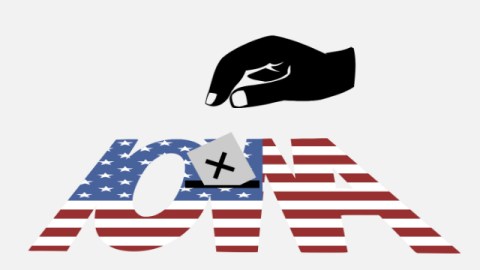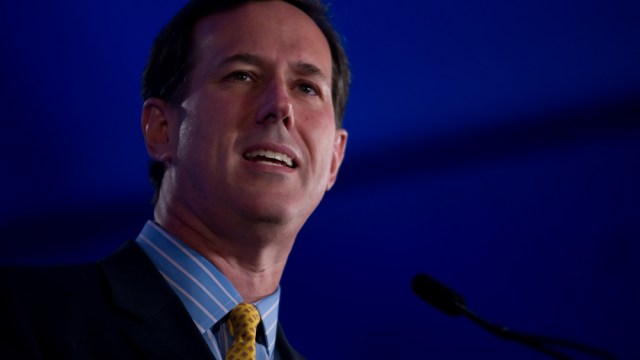Showdown in Iowa: Why Markets Beat Models

Sign up for Big Think on Substack
The most surprising and impactful new stories delivered to your inbox every week, for free.
An interesting thing happened yesterday in American politics. Mitt Romney, a former governor of Massachusetts, beat Rick Santorum, a former senator from Pennsylvania, by just eight votes in the Iowa caucuses. But the really interesting thing was how the people who tried to forecast the result fared.
As Iowans began heading to their caucus sites, the Twittersphere lit up with predictions. Two denizens of the New York Times’s website, Nate Silver and Justin Wolfers, made a bet on the outcome. Wolfers, a professor of economics at the University of Pennsylvania (and a friend of mine from graduate school), backed Romney, who was favored on Intrade.com. The Intrade website allows political prognosticators to place bets by buying derivatives that can be redeemed for $10 if their predictions are correct; Romney was trading around $5 and up yesterday. Silver, a blogger who made his name with baseball statistics and a spot-on prediction of the 2008 presidential election, chose Santorum using a statistical model that suggested he had “momentum” coming into Iowa.
I don’t know whether Silver used momentum, which he defines as “the trajectory of each candidate’s polling”, to make his 2008 predictions, but I think it leaves him open to major-league errors. To understand why, think about what momentum means in the physical world. If I ask you whether a baseball traveling through the air at 90 miles per hour is likely to stop in the next second, you’ll probably say no – its momentum will carry it forward. But what happens if the baseball hits a brick wall? You wouldn’t even know the brick wall was there unless you took into account all the information that might logically affect the path of the ball, not just the ball’s behavior in the past. In other words, if you base your predictions on extrapolation, you may be ignoring important facts that can affect the future. The same can happen in politics, economics, and any number of other fields.
As long as there are no brick walls, Silver’s models may work just fine. But I’m worried that his models are based too much on the numbers he’s already seen and not enough on the underlying processes that will determine political outcomes. The Intrade market isn’t constrained the way his models are, because investors can take into account every bit of information that may affect an election. No mathematical model can do that.
Reliance on models to assess risk was one of the things that brought Wall Street to its knees a few years ago. People could see that the big banks were taking on unhealthy amounts of debt, but the banks kept trading as long as their risk models didn’t raise any red flags. The problem was that the models didn’t even account for the kinds of events that would unfold as subprime mortgages went sour.
When I make forecasts (as I did in my book Outrageous Fortunes, whose paperback edition is out this week!), I try to look deep below the streams of numbers to see the tectonic plates that are shifting under the surfaces of the world’s economies. Then I use logic to predict how those forces will collide. I still use models to help identify these forces, but I’m convinced that depending on them completely is a recipe for failure. The world is changing every minute, and there’s no model that can keep up.
I don’t know whether Silver used momentum, which he defines as “the trajectory of each candidate’s polling”, to make his 2008 predictions, but I think it leaves him open to major-league errors. To understand why, think about what momentum means in the physical world. If I ask you whether a baseball traveling through the air at 90 miles per hour is likely to stop in the next second, you’ll probably say no – its momentum will carry it forward. But what happens if the baseball hits a brick wall? You wouldn’t even know the brick wall was there unless you took into account all the information that might logically affect the path of the ball, not just the ball’s behavior in the past. In other words, if you base your predictions on extrapolation, you may be ignoring important facts that can affect the future. The same can happen in politics, economics, and any number of other fields.
As long as there are no brick walls, Silver’s models may work just fine. But I’m worried that his models are based too much on the numbers he’s already seen and not enough on the underlying processes that will determine political outcomes. The Intrade market isn’t constrained the way his models are, because investors can take into account every bit of information that may affect an election. No mathematical model can do that.
Reliance on models to assess risk was one of the things that brought Wall Street to its knees a few years ago. People could see that the big banks were taking on unhealthy amounts of debt, but the banks kept trading as long as their risk models didn’t raise any red flags. The problem was that the models didn’t even account for the kinds of events that would unfold as subprime mortgages went sour.
When I make forecasts (as I did in my book Outrageous Fortunes, whose paperback edition is out this week!), I try to look deep below the streams of numbers to see the tectonic plates that are shifting under the surfaces of the world’s economies. Then I use logic to predict how those forces will collide. I still use models to help identify these forces, but I’m convinced that depending on them completely is a recipe for failure. The world is changing every minute, and there’s no model that can keep up.
Sign up for Big Think on Substack
The most surprising and impactful new stories delivered to your inbox every week, for free.




